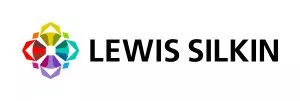- within Law Practice Management topic(s)
- in Australia
- within Law Practice Management, Cannabis & Hemp and Privacy topic(s)
In this episode of the Future of Work Hub's Peer-to-Peer podcast, Julia Paulding, Chief People Officer at Lewis Silkin, sits down with Cathy Temple, Head of HR, EMEA at Salesforce. They discuss HR's evolving role in AI-driven workplace transformation, emphasising the need for trust, transparent communication, human-centric leadership and continuous upskilling to build agile, future-ready organisations.
Key Takeaways:
1. Communicate with transparency during periods of rapid AI-driven transformation: Articulate the "why" behind AI adoption, including the benefits and intended outcomes. Be transparent about how AI will be integrated into people processes in order to foster trust, reduce uncertainty and proactively address concerns around job displacement.
2. Equip managers to lead with empathy in an AI-augmented workforce: Support managers to develop human-centric leadership skills tailored to hybrid teams, comprising both people and AI agents. Encourage empathetic leadership, psychological safety, and a culture of trust, with a focus on outcomes, collaboration, and meaningful contribution.
3. Build future-ready capabilities across the workforce: Focus on developing a combination of human skills, agent skills and business skills. Prioritise unique human capabilities (emotional intelligence, collaboration, critical thinking, adaptability, curiosity), building data literacy and proficiency using AI tools, and skills such as strategic thinking and project management.
4. Leverage AI-driven workforce planning tools: Invest in intelligent talent development platforms which use AI to identify skills gaps, match employees to internal opportunities, and support dynamic career growth. These tools enable personalised development pathways and agile workforce strategies.
5. Champion proactive change management and an adaptable culture: HR must act as a strategic partner in guiding organisations through transitions. Build resilience by promoting open dialogue, continuous learning, and empowering teams to adopt new technologies and processes.
The content of this article is intended to provide a general guide to the subject matter. Specialist advice should be sought about your specific circumstances.


